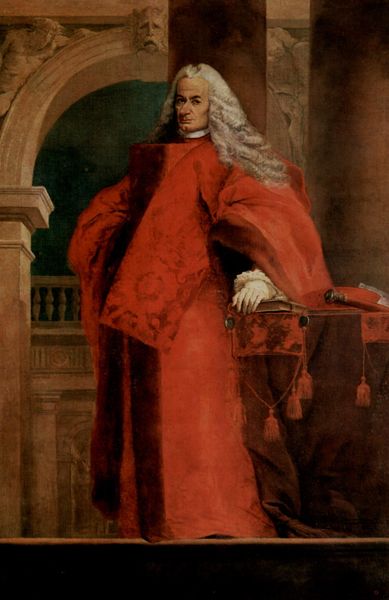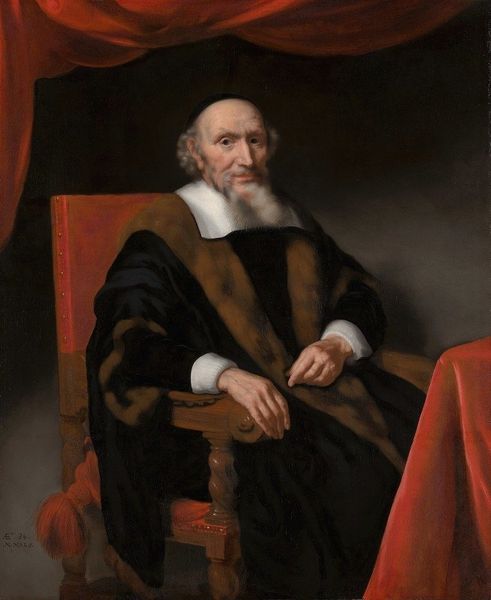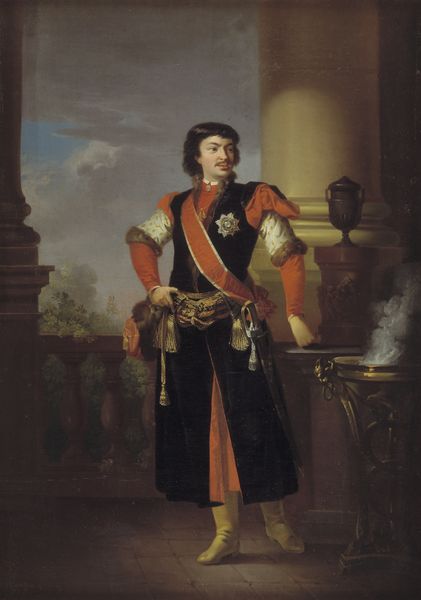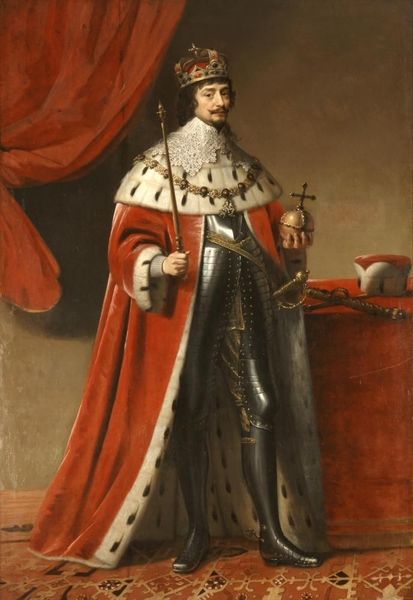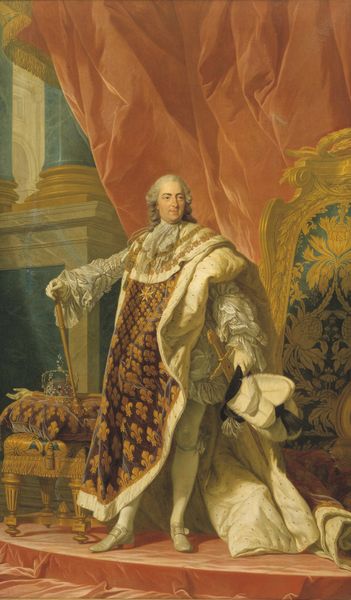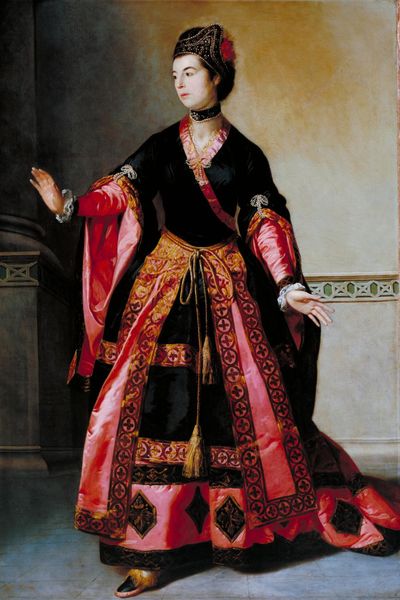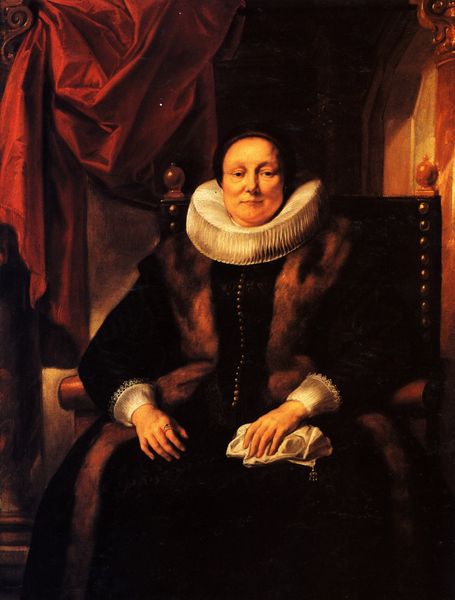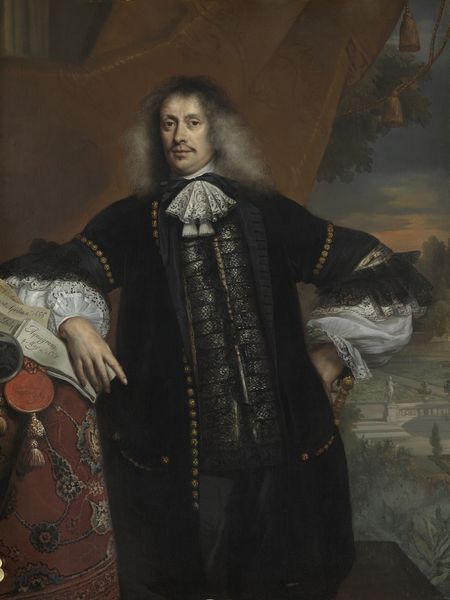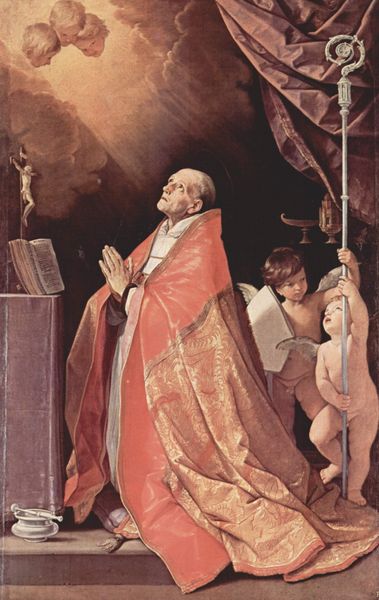
painting, oil-paint
#
portrait
#
baroque
#
painting
#
oil-paint
#
history-painting
#
academic-art
Dimensions: overall: 225 x 161.6 cm (88 9/16 x 63 5/8 in.) framed: 261.9 x 197.5 x 7 cm (103 1/8 x 77 3/4 x 2 3/4 in.)
Copyright: National Gallery of Art: CC0 1.0
Editor: Here we have Philippe de Champaigne's "Omer Talon," created in 1649 using oil paint. The deep reds and blacks of his robes, contrasted with his pale face, give the painting a serious, almost severe, tone. What symbols stand out to you in this piece? Curator: I immediately notice the heavy drapery and architectural elements which are certainly meant to communicate the sitter's power, but what really captivates me is the austere book and papers on the table. Can we read them as metaphors for law, order, and justice in a time of great social and political turbulence? Do these suggest not only Omer Talon's occupation, but also the principles that governed his life? Editor: That's a fascinating way to consider those objects. The book feels less about knowledge itself and more about his position. Is the ornate clock on the table merely decorative, or does it suggest something deeper? Curator: Time, as measured by the ornate clock, becomes a stark reminder of mortality but it also signifies legacy. Talon is presenting himself as a pillar of stability. He seeks to communicate his presence to posterity, his lasting contribution, and that black robe reminds us of this weight. What does the slight, almost imperceptible smile convey to you? Editor: Perhaps a sense of inner confidence, a quiet understanding of his place in history? Curator: Precisely! This painting is much more than a portrait, isn't it? It's a careful construction of identity, playing upon recognizable visual symbols to establish authority and enduring influence. Editor: I didn’t think of portraiture as using so many universal symbols. I’ll have to think about that in relation to other portraits now. Curator: And I was able to examine more closely how Champaigne communicates power through symbols of legacy.
Comments
No comments
Be the first to comment and join the conversation on the ultimate creative platform.

